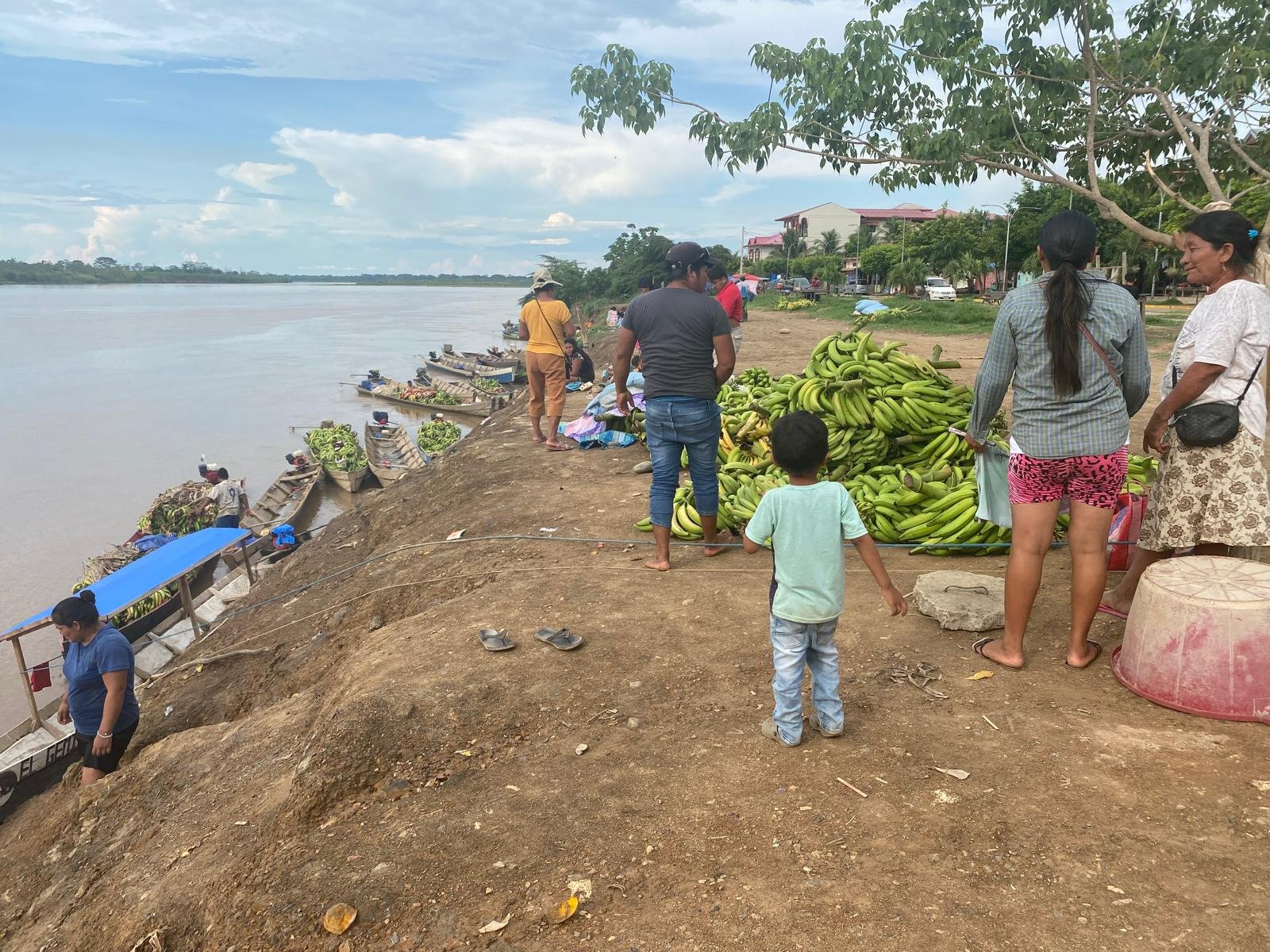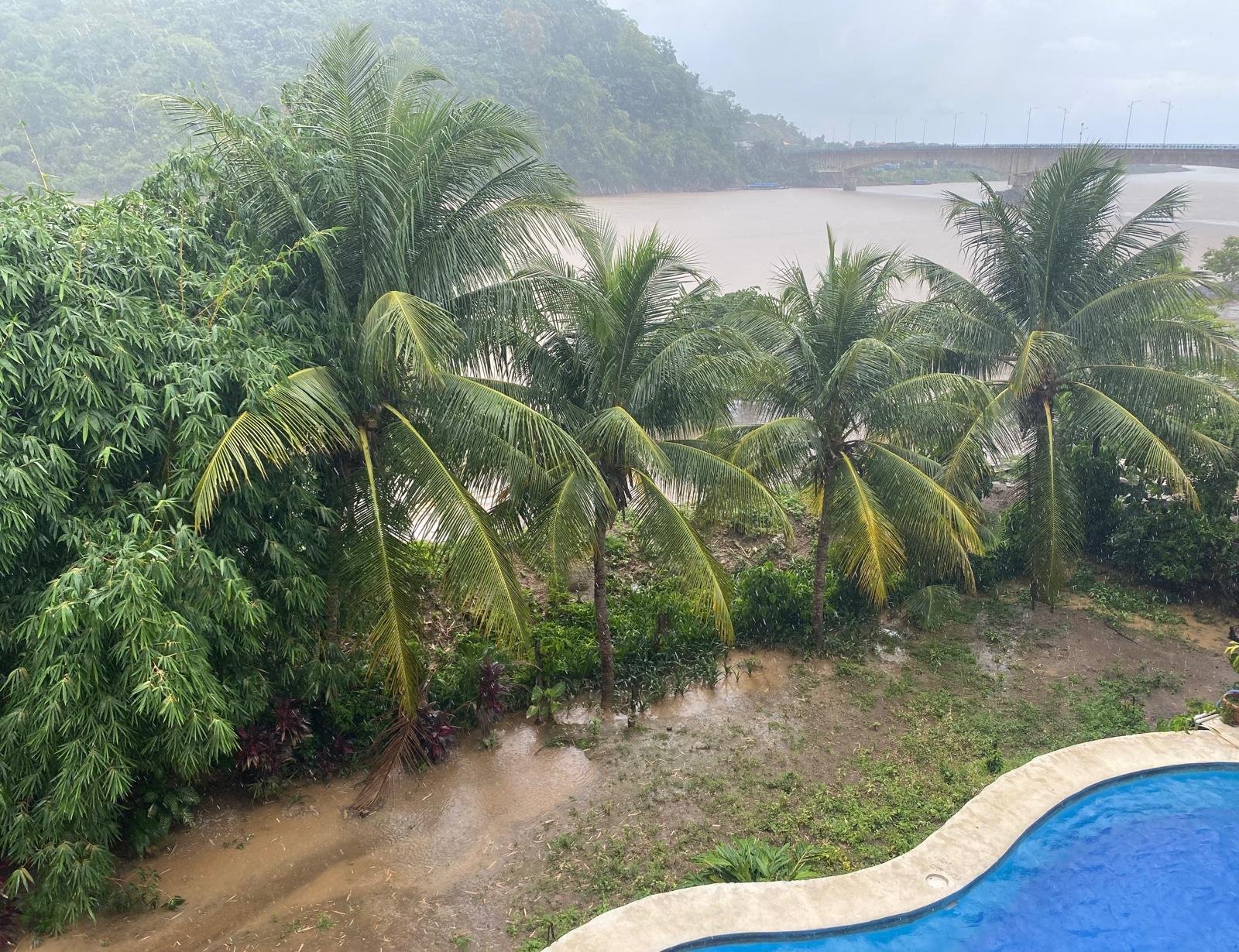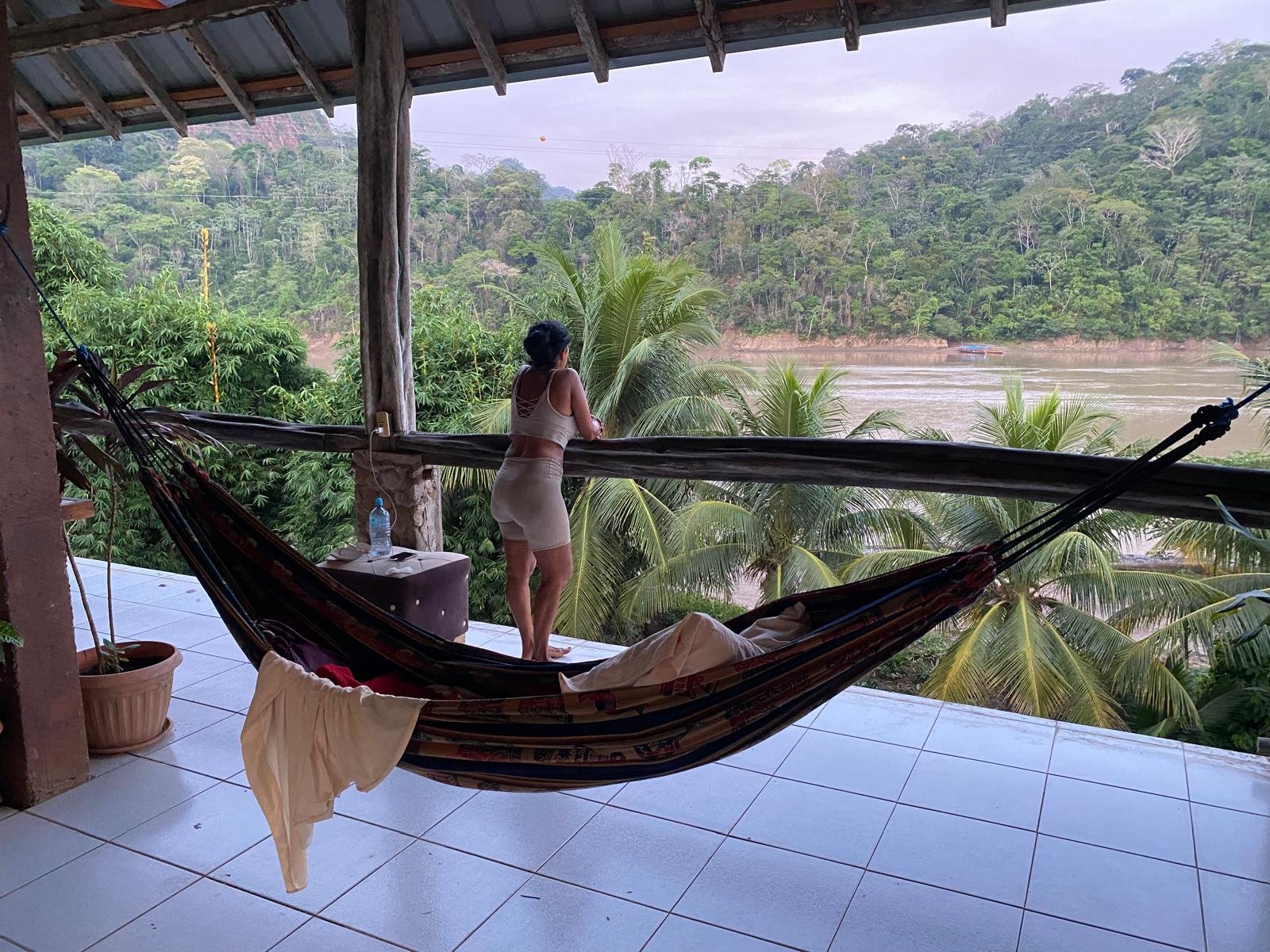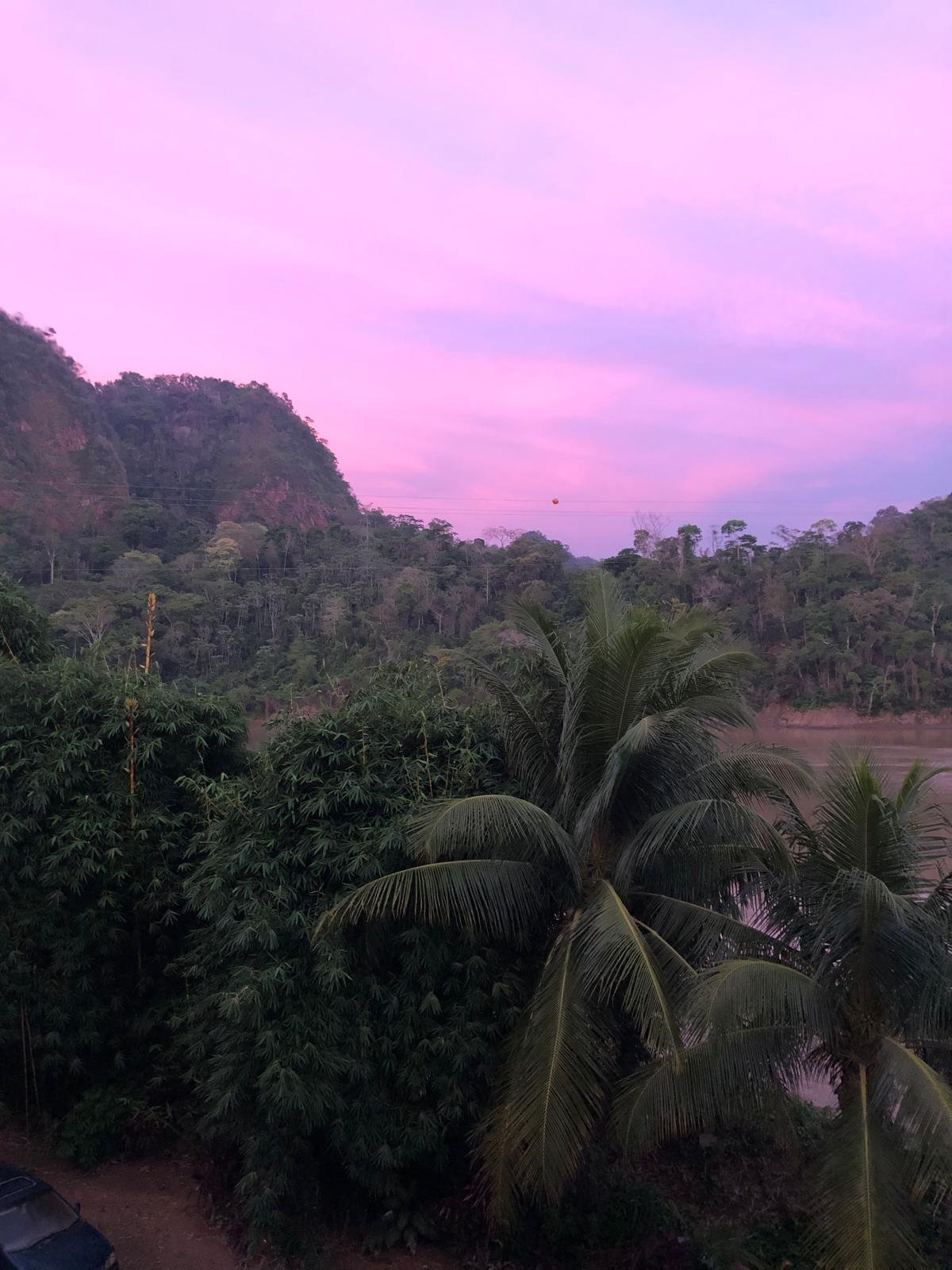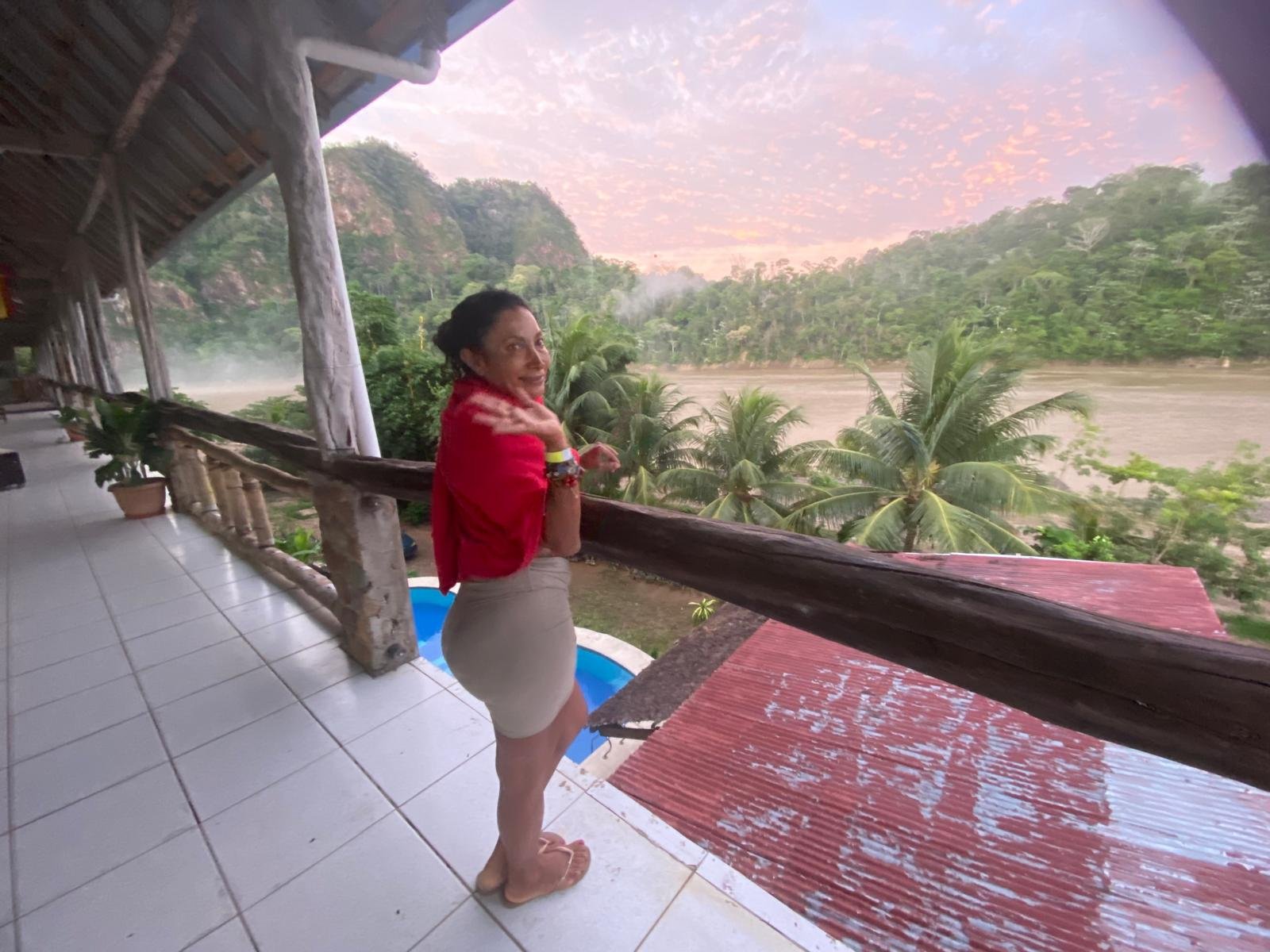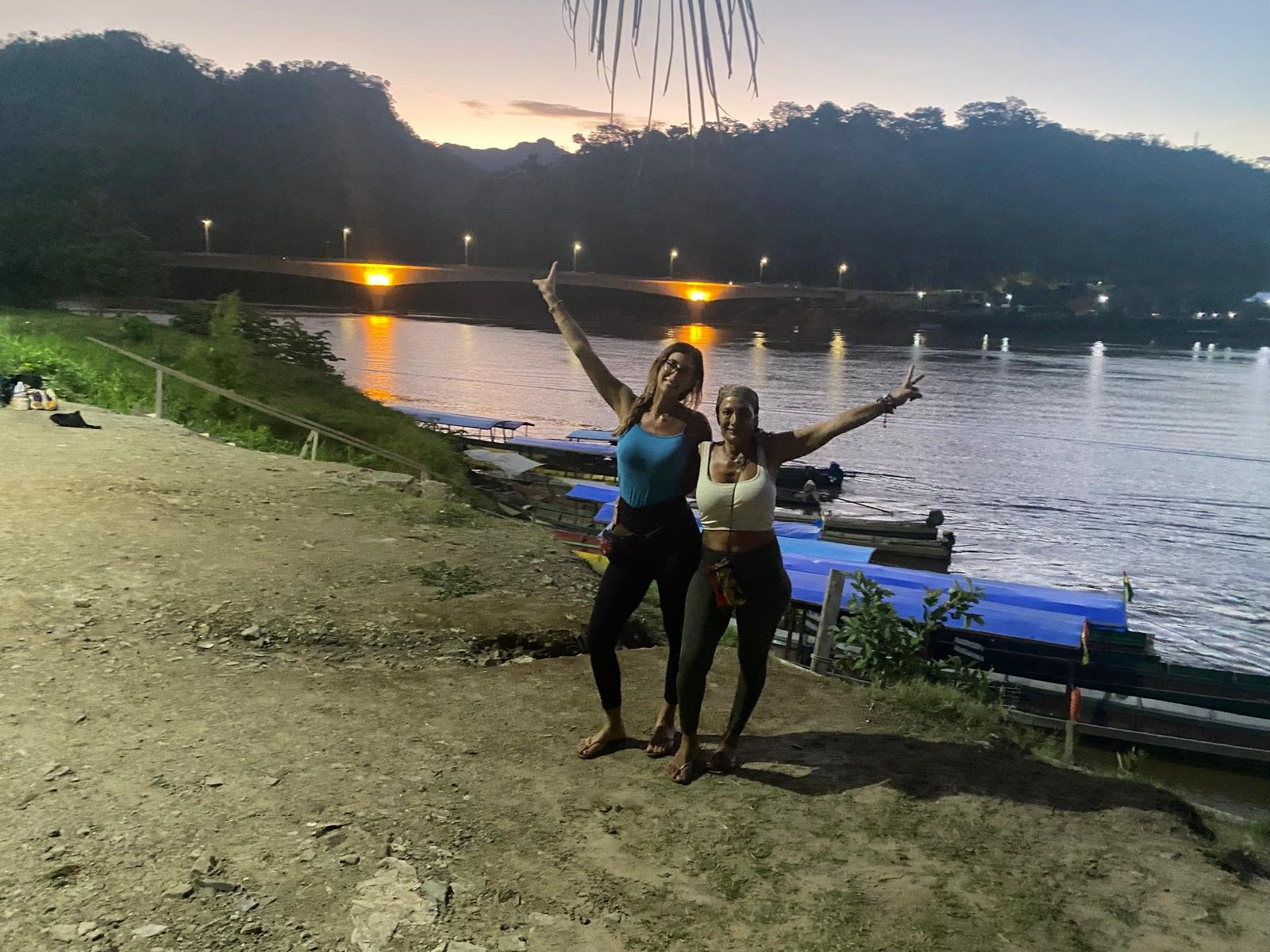Beni River, Rurrenabaque, Amazon of Bolivia.
3 of us riding the mototaxi in Rurrenabaque, Amazon of Bolivia.
Exploring the sounds, colors, tastes and community of the Amazon of Bolivia is an amazing adventure. We traveled to the Bolivian Amazon and visited the town of Rurrenabaque.
Local Bolivians of the Amazon bringing in fresh fish from the Beni River.
Local Bolivians with their freshly caught fish from the Beni River of the Amazon.
Rurrenabaque is a small town in the North of Bolivia on the Beni River. This town is the capital of the Amazon department of Rurrenabaque. The short name for the area is “Rurre”.
City center of the Rurre in the Amazon of Bolivia.
We decided to visit this area of Bolivia by taking the night bus. It was an adventure to do the bus ride from La Paz to Rurrenabaque. The night bus was full of local Bolivian people and some indigenous. The road was really dangerous, the curves and the conditions of the road were what made it unsafe to do the ride. The road, mostly in the dark, and through heavy foggy conditions. Some parts of the roads are not paved with concrete and just debris, especially towards the area when you get closer to the Amazon. The bus was old and broke down in the middle of the night. It is not recommended to do this alone as a tourist, even if you have fears from dangerous situations.
Line of people, cars, and tanks to fill up gasoline in the station in Amazon of Bolivia.
On the way, you can see long lines of cars, bicycles, people waiting before a gas station. Due to the fact that during our visit, there was a lack of gasoline and the lines were going on for at least 2 days and sometimes more. In other parts of Bolivia, there were roadblocks and you had to know which was blocked and when in order to get to your destination.
Local Bolivians and indigenous people on the river bank of the Beni river in Rurre, Amazon of Bolivia.
Early morning local Bolivian bringing in on the canoe papaya and platano to sell in the city center of Rurre, Amazon of Bolivia.
Upon arrival at Rurrenabaque, we checked into the hostel and we started to tour the town. It is an amazing town. The community is very welcoming and we felt safe. There we met a group of tourists from Europe who were booking tours into the jungle, as well as some volunteers at the hostel.
Amazing view of the Beni River from the hostel in Rurre, Amazon of Bolivia.
In that area, many people returned from the jungle tour sick, with the bacteria Salmonella. Therefore, we decided to visit the Amazon community by land instead of entering the jungle by boat due to sickness.
Offering of papaya by the local Bolivian woman to Carmit in the community of the Amazon.
We took a ride with the locals to the community “Takana Tampusa” inside the Amazon land. We were welcomed very nicely by the community. We were offered fruits and food. We stayed the day and went to sit a little bit in the river while exploring the village.
City center with locals of Rurre in the Amazon of Bolivia.
Carmit giving out ice cream to the locals of Rurre in Amazon of Bolivia.
In the evening, we came back and we shared a few hours in the market, including talking with the locals and buying ice cream for the children that were surrounding us.
Carmit with the children of the Rurre town in the Amazon of Bolivia going to buy ice cream.
At night, we slept in hammocks, outside on the terrace roof of the hostel, enjoying the sunset and the cold breeze. In the early morning, we experienced the unique adventure of waking up with the Amazon sounds, colors and special views of the Beni river.
Waking up in the hammocks with the view of the Beni River in the Amazon of Bolivia.
Beautiful views of the sunset in the Amazon of Bolivia.
Waking up to the nature sounds and beautiful colors of the Amazon of Bolivia.
I definitely will visit this area again while enjoying exploring Bolivia.
Carmit and Noy in the evening walk in Rurre, Amazon of Bolivia.






